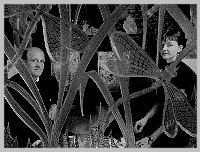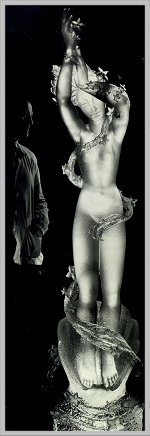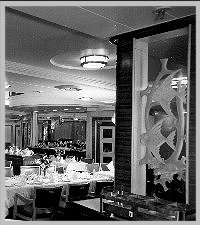| | | |

|
|
Arthur and Joy with Insect Screen
|
|
In March 1948 Fleischmann left Sydney for London aboard the liner the "Orion" with fifty
pieces of sculpture carefully packed in various crates.
He originally planned to travelon from England to visit his home town again,
but en-route the political atmosphere in Eastern Europe made it impossible.
The short visit changed into a permanent stay and he spent the remaining forty
years of his life in London. He quickly established a studio in Green Street in Mayfair
and was soon exhibiting at the Royal Academy, doing portrait busts and executing public commissions.
|
|
By a chance introduction he established contact with the plastics company ICI.
Between the world wars, two of their chemists, Rowland Hill and John Crawford had developed
acrylic, registered under the trade-name "Perspex". Perspex was used during World War II
as shatterproof glass-substitute.
|

|
|
Runding and Rmpang returning from rice fields
|
|
Perspex quickly became the artist's trade-mark as he began to develop the tools and
techniques for working with this new material. Harking back to the Central-European
traditions of glass work, he carved small sculptures from Perspex as well as larger
compositions. The first Perspex work, entitled 'Runding and Rmpang returning
from rice fields' dates from 1949.
|

|
|
The Adventures of Jupiter
|
|
Perspex is manufactured in flat sheets, so Fleischmann used a block made of many sheets
laminated together for Aphrodite.
Another work is a carved panel 'The Adventures of Jupiter'. The sensually intertwining
figures are reminiscent of the carvings of Hindu gods that he must have seen first-hand
during his travels in South East Asia.
|

|
|
Arthur With Aphrodite
|
|
|
Fleischmann also used Perspex for commissions decorating ocean liners.
Later in the 1970s Fleischmann began working with Perspex on abstract sculptures,
for example engraved panels. Later he combined these abstract forms with water,
coining the name 'water-sculpture'.
|

|
|
Reina del Mare
|
|




